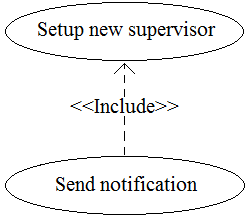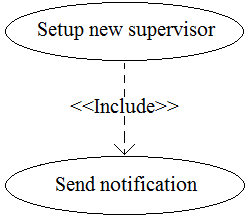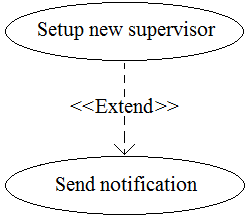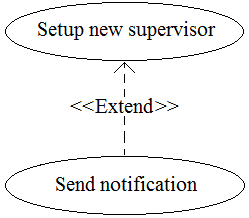A business analyst (BA) is working on a payment system (PS) implementation. A set of systems which should interact with a new system has been identified. The business analyst defined that a user with role of "Supervisor" in the PS must pass a two-factor authentication before an execution of the functions: "Change system parameters" and "Set up new supervisor." A user must have the role of "Supervisor" to use the standard functions "Send mail notification" or "Send SMS notification".
The BA defined the following use cases:
"¢ "Change system parameters"
"¢ "Setup new supervisor"
"¢ "Send mail notification"
"¢ "Send SMS notification"
"¢ "Send notification"
"¢ "Pass a two-factor authentication"
The BA wants to create a Use Case diagram.
Which standard relationship should be defined between "Setup new supervisor" and "Send notification"?
A.

B.

C.

D.
